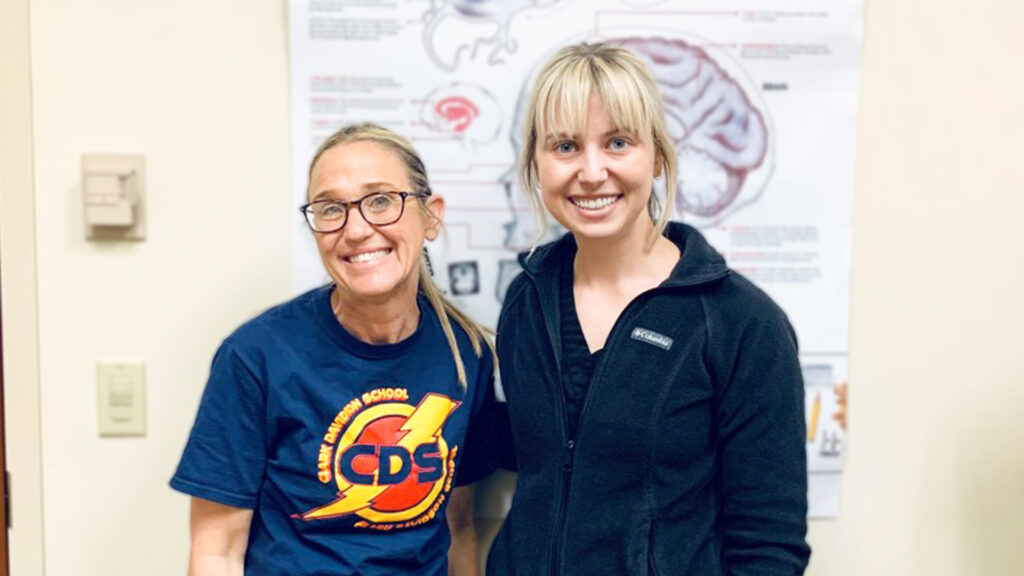PT Solutions
Conditions That Can Be Treated with Occupational Therapy
January 5, 2019
What is Occupational Therapy?
Occupational Therapy (OT) is defined by the American Occupational Therapy Association (AOTA) as the therapeutic treatment for people to develop, recover, or maintain their everyday skills. Occupational therapists often work with people with mental disabilities, injuries, or impairments in order to reinforce their independence and self-esteem.
![]()
OT is very common for patients of all ages. Impaired children, injured soldiers, or the elderly with reduced muscle function commonly opt for this form of treatment. OT practitioners also address their patient’s psychological and social well-being, making it vital for optimum physical and mental health.
Occupational Therapy can help with a variety of conditions, including the following:
Amputations
Amputations can be difficult to deal with, particularly if patients start experiencing ghost limbs. Performing daily tasks can get very difficult, which can negatively impact the patient’s mental health.
Occupational therapists provide patients with critical interventions, recognizing their goals, analyzing tasks, and offering relevant modifications to complete those goals. Specialists also offer prosthetic training to make the patient’s life easier.
Depression & Anxiety
Occupational therapists aim to help those suffering from depression and anxiety by introducing self-awareness skills, pacing strategies, grading activities, and targeted exercises.
Arthritis
People with arthritis get stiff joints due to the lack of movement, resulting in pain and discomfort. Occupational therapists help those affected by offering techniques to perform their daily tasks without straining their joints.
Brain Injury, Dementia, & Alzheimer’s
Recovering from a brain injury can take time – from a few months to years. OT can help patients regain control over their daily tasks through exercises that form pathways between their limbs and brain. These techniques are also known to help people with Alzheimer’s & dementia remember things by forming mental connections.
Burns
Combined with physical therapy, OT can help burn victims reduce pain during movements and relearn physical functions that the brain might have forgotten due to a lack of use. A safe and monitored environment is provided for such patients to make sure they don’t hurt themselves during the sessions.
Carpal Tunnel Syndrome
Although commonly sought after a carpal tunnel surgery, OT is also used to attempt to avoid the surgery altogether. Carpal tunnel syndrome is usually caused by the overuse of fingers, wrists, hands, and the forearms.
OT treatments for carpal tunnel include splinting of the affected area, exercises, and massages to alleviate pain and swelling. However, post-surgery treatments differ, as they include mild exercises, flexing and stretching, strength training, and joint stabilization.
Dupuytren’s Contracture
Dupuytren’s Disease is a progressive fibro-proliferative disorder that affects the hands and causes permanent flexion and contracture of the fingers. Occupational therapists usually recommend exercises that help increase the range of movements in the fingers and hands.
Other conditions that can be treated with the help of OT are:
- Tendinitis
- Hip or Knee Replacements
- Huntington’s Disease
- Motor Neurone Disease
- Multiple Sclerosis
- Orthopaedics
- Parkinson’s Disease
- Scar Management
- Spinal Injury
- Stroke
Occupational therapy is also quite useful to improve the quality of life and well-being of children suffering from various disorders, like the following listed.
Asperger’s Syndrome
Asperger’s Syndrome is usually detected in children by the age of 3, while in some cases, it can be diagnosed as early as infancy. Occupational therapy helps children by reinforcing their motor skills and also with sensory integration problems.
ADHD
Children with ADHD usually have difficulty regulating, prioritizing, or switching attention, and easily get distracted. Using sensory integration therapy, occupational therapists aim to develop the child’s sensory processing capabilities and reorganize their sensory system as a whole. Other techniques are also used to strengthen their senses.
Autism
Since children with Autism have trouble communicating and interacting with others, occupational therapists study their environment and work with teachers and parents to develop specialized exercises that specifically cater to the child’s needs. These exercises aim to increase the child’s attention span, play skills, attentive transition, response to stimuli, and improve the interaction between them and others.
Cerebral Palsy
Children with cerebral palsy can greatly benefit from therapy techniques aimed to increase motor function and lessen limitations. OT can help them create pathways to performing daily tasks, and process and interpret sensory input.
Down’s Syndrome
Occupational therapists are quite adept at creating treatment programs for children with Down’s Syndrome, which can help them learn handwriting, keyboarding, drawing, etc. These activities are extremely beneficial for children who desire to be independent.
Other conditions OT can help with include:
- Duchene Muscular Dystrophy
- Developmental delay
- Dyspraxia
- Learning Difficulties
- Sensory Processing Disorder
- Spina Bifida
Occupational therapists consider all of the patient’s needs, be it physical, psychological, social, or environmental. This consideration goes a long way when supporting patients, giving them hope and providing them with the prospect of being able to perform their own tasks without depending on anyone.
To request an occupational therapy appointment at one of our locations, please complete the form below.




